Recoleta, the epitome of Buenos Aires’ aristocratic heritage, offers a captivating glimpse into the city’s storied past. Amidst the grand architecture and tree-lined avenues, the renowned Recoleta Cemetery stands as a testament to Argentina’s elite, housing the final resting places of the country’s most influential figures, including the iconic Eva Perón. This juxtaposition of power and heritage provides a profound insight into the cultural and economic tapestry that has shaped the nation’s identity. Delving deeper into this remarkable site promises to unveil the intricate narratives that have defined Recoleta’s enduring legacy.
Good To Know
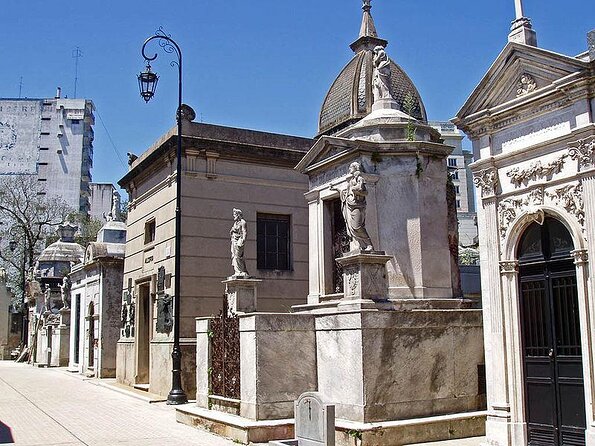
-
Recoleta, the aristocratic hub of Buenos Aires, reflects the grand opulence and social hierarchies of the Belle Époque era.
-
Recoleta Cemetery houses the tombs of Argentina’s elite, including presidents and cultural icons, showcasing the power and influence of the upper class.
-
The wealth and dominance of large landowners significantly shaped Argentina’s economic history, contributing to the development of Buenos Aires’ grand architecture.
-
The contrast between the ornate mausoleums in Recoleta Cemetery and everyday Argentine experiences highlights the stark social inequalities of the time.
-
The tour guide’s expertise in Buenos Aires’ history and the Belle Époque’s impact provides an immersive understanding of the power dynamics and aristocratic heritage of Recoleta.
Recoleta: Epicenter of Aristocracy

In the heart of Buenos Aires, Recoleta stands as the epicenter of the city’s aristocratic heritage. This exclusive neighborhood was once home to the country’s elite, whose grand mansions and opulent lifestyles reflected the wealth and power of Argentina’s landed gentry.
Today, Recoleta remains a symbol of the nation’s Belle Époque, with its tree-lined avenues, upscale boutiques, and prestigious cultural institutions. Visitors can explore the area’s architectural gems, such as the Church of Our Lady of Pilar, and gain insights into the social dynamics that shaped Argentina’s history.
Recoleta’s enduring allure lies in its ability to transport visitors to a bygone era of aristocratic privilege and influence.
You can also read our reviews of more tours and experiences in Buenos Aires.
Exploring the Famed Cemetery
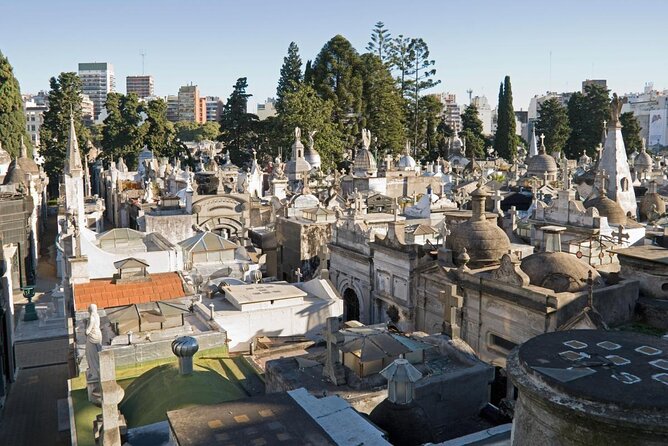
Amidst Recoleta’s aristocratic grandeur, the Recoleta Cemetery stands as a captivating necropolis that attracts visitors from around the world. This famous cemetery is home to the tombs of Argentina’s elite, including presidents, generals, and cultural icons.
Wandering through its ornate mausoleums and statues, visitors gain insights into the country’s history and the lasting influence of its upper class. The cemetery’s most renowned resident is Eva Perón, whose tomb draws thousands of pilgrims annually.
Beyond Evita’s resting place, the cemetery offers a glimpse into Argentina’s past, showcasing the architectural styles and social hierarchies that defined the Belle Époque era.
Argentina’s Belle Époque Influences
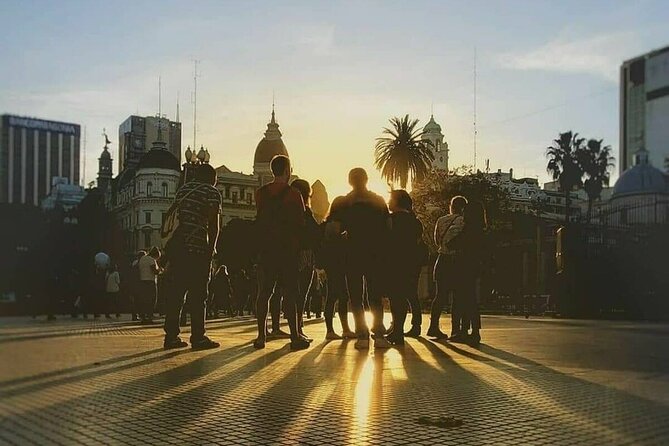
The Belle Époque era left an indelible mark on Argentina’s urban landscape, particularly in Buenos Aires’ Recoleta district. This period of economic prosperity from the late 19th to early 20th century fueled the city’s development, with grand boulevards, opulent architecture, and a reputation as the "Paris of South America."
The influence of this era is evident in:
- Recoleta’s wide, tree-lined avenues
- The neoclassical and Beaux-Arts style buildings
- The influx of European immigrants and their cultural impact
- The rise of large landowners and the agricultural export economy
- The city’s reputation for arts, culture, and a cosmopolitan lifestyle
These features reflect Argentina’s ambitions to emulate European sophistication and cement its status as a modern, prosperous nation during the Belle Époque.
Landowners and Economic Dominance
Large landowners played a pivotal role in shaping Argentina’s economic history during the Belle Époque era. This class of elite, titled aristocrats dominated the country’s agricultural exports and exerted significant political influence.
Their vast estancias, or ranches, produced the beef, grains, and other commodities that fueled Argentina’s rapid economic growth. This landed gentry’s wealth and power were crucial to the development of Buenos Aires as the "Paris of South America", with its grand boulevards, mansions, and European-influenced architecture.
However, the inequalities perpetuated by the landowners’ dominance would later contribute to social unrest and political upheaval in the 20th century.
Discussions on History and Culture
On the Recoleta & Cemetery tour, travelers engage in discussions that explore Argentina’s captivating history and vibrant culture.
The university graduate guide expertly leads thought-provoking conversations, covering topics such as:
- The city’s reputation as the "Paris of South America" and the impact of the Belle Époque era
- The significance of Recoleta Cemetery and its notable inhabitants
- The role of large landowners in shaping Argentina’s economic history
- The influence of Argentina’s political landscape on its cultural development
- Interactive learning opportunities, including tasting mate and participating in discussions.
These engaging dialogues offer travelers a deeper understanding of the country’s past and present, enriching their exploration of Recoleta and its legacy.
Engaging With Local Traditions
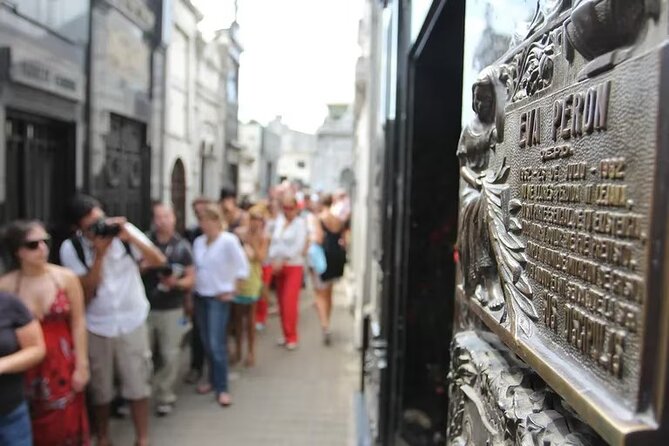
Traversing the Recoleta & Cemetery tour, travelers enjoy the local traditions that have shaped Buenos Aires’ vibrant culture.
From sipping mate, a traditional infused drink, to participating in lively discussions, the experience offers an authentic glimpse into the city’s heritage.
The tour’s interactive elements encourage visitors to actively engage with the guide, fostering a deeper understanding of Argentina’s complex history and the sociopolitical forces that have influenced its development.
Discovering Buenos Aires’ Reputation
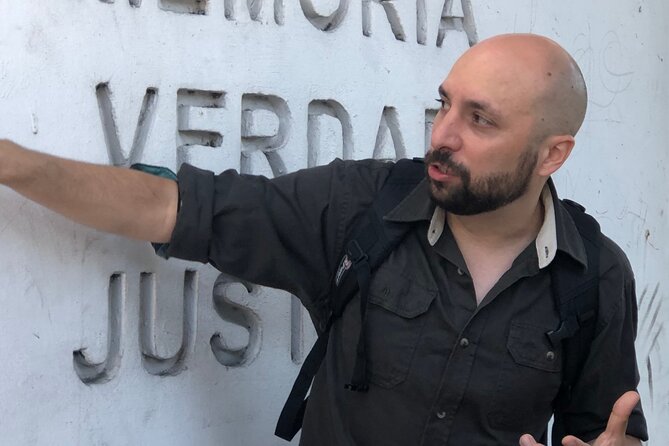
The Recoleta & Cemetery tour offers visitors a captivating glimpse into Buenos Aires’ reputation as the "Paris of South America."
Through the exploration of the Recoleta neighborhood and its renowned cemetery, travelers uncover the city’s remarkable blend of European influences and distinct Argentine identity.
The tour highlights:
- The impact of the Belle Époque on the city’s architecture and urban planning
- The significance of Recoleta’s status as a hub for Argentina’s elite and influential
- The cemetery’s role in showcasing the country’s history, culture, and socioeconomic dynamics
- The contrast between the grand mausoleums and the lived experiences of everyday Argentinians
- The enduring legacy of large landowners in shaping Argentina’s economic and political landscape.
Knowledgeable and Passionate Guide
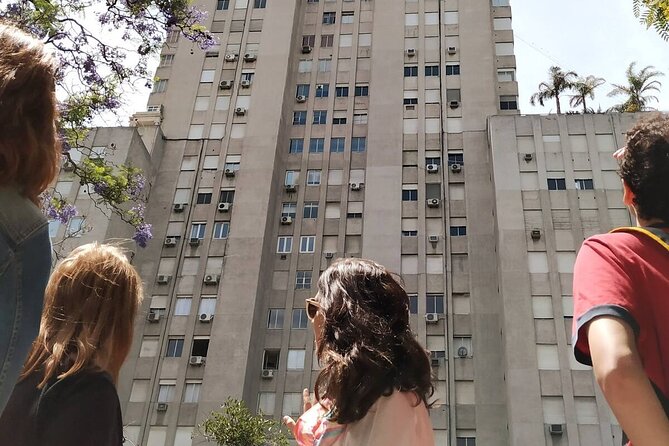
Guiding the tour through Recoleta and its cemetery is a university graduate, whose expertise and passion for the history and culture of Buenos Aires shine through.
Offering an engaging and interactive experience, the guide skillfully weaves together the stories of the city’s past, captivating travelers with their profound knowledge.
Whether discussing the impact of the Belle Époque or the role of large landowners, the guide ensures that participants leave with a deeper understanding of Argentina’s complex social and economic history.
Reviewers consistently praise the guide’s ability to bring the destination to life, creating an immersive and memorable journey for all who join the tour.
Frequently Asked Questions
What Is the Dress Code for the Tour?
The tour doesn’t have a strict dress code, but travelers are advised to wear comfortable, weather-appropriate clothing. Casual attire is recommended to ensure a pleasant and relaxed walking experience throughout the Recoleta neighborhood.
Is the Tour Suitable for Children?
The tour may not be suitable for young children, as it focuses on adult themes and requires a significant amount of walking. However, older children interested in history and culture could potentially enjoy the interactive learning experience.
Does the Tour Include Any Food or Beverage Tastings?
The tour doesn’t explicitly include any food or beverage tastings, but it emphasizes interactive learning. Participants can ask questions, engage in discussions, and experience local customs like tasting mate during the Recoleta Cemetery visit.
Can the Tour Be Customized for Private Groups?
Yes, the tour can be customized for private groups. The tour company offers the flexibility to adjust the itinerary and group size to accommodate the specific needs and interests of private bookings.
Are Any Discounts Available for Students or Seniors?
The tour offers student and senior discounts, typically around 10-15% off the regular price. Guests should inquire about these options when booking to take advantage of the savings.
The Sum Up
Recoleta’s grand architecture and the Recoleta Cemetery‘s ornate mausoleums reflect Argentina’s aristocratic past. The cemetery serves as a testament to the social hierarchies and economic dominance of the elite during the Belle Époque. This juxtaposition of power and heritage offers a profound insight into Argentina’s cultural fabric and historical influences, underscoring the country’s complex legacy.
More Tour Reviews in Buenos Aires
- Traditional Argentine Asado in Palermo
- Piazzolla Tango Show and Dinner in Buenos Aires
- Arrival Private Transfers From EZEiza Airport EZE to Buenos Aires
- The Aljibe Tango Show (Optional Dinner)
- Discover La Plata: A Guided Architectural and Sightseeing Tour
- Skip the Line: Boca Juniors Museum and Tour: THE VIP BOMBONERA
Not for you? Here's more nearby things to do in Buenos Aires we have reviewed
- 25 Best Guided Tours In Buenos Aires
- 25 Best Tours In Buenos Aires
- 3 Best Shore Excursions In Buenos Aires
- 7 Best Shopping Tours In Buenos Aires
- 16 Best Drinking Tours In Buenos Aires
- Traditional Argentine Asado in Palermo
- Piazzolla Tango Show and Dinner in Buenos Aires
- Arrival Private Transfers From EZEiza Airport EZE to Buenos Aires
- The Aljibe Tango Show (Optional Dinner)
- Discover La Plata: A Guided Architectural and Sightseeing Tour
- Skip the Line: Boca Juniors Museum and Tour: THE VIP BOMBONERA
- Milonga Dance Lesson and Tango History Tour
